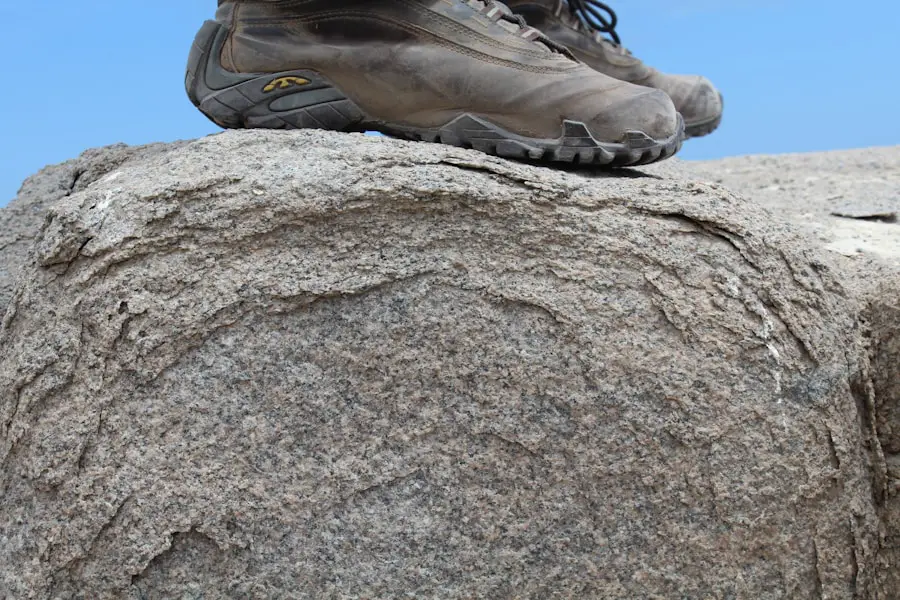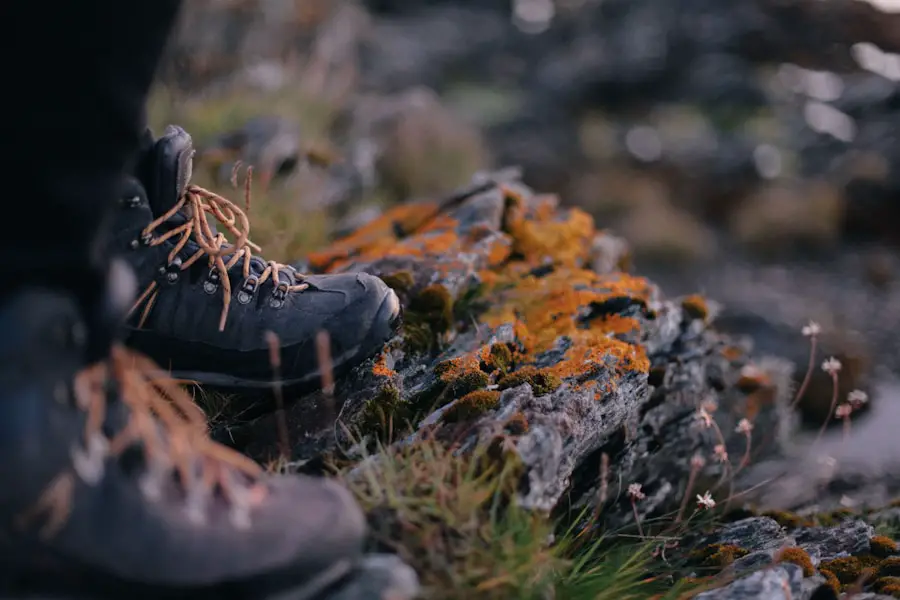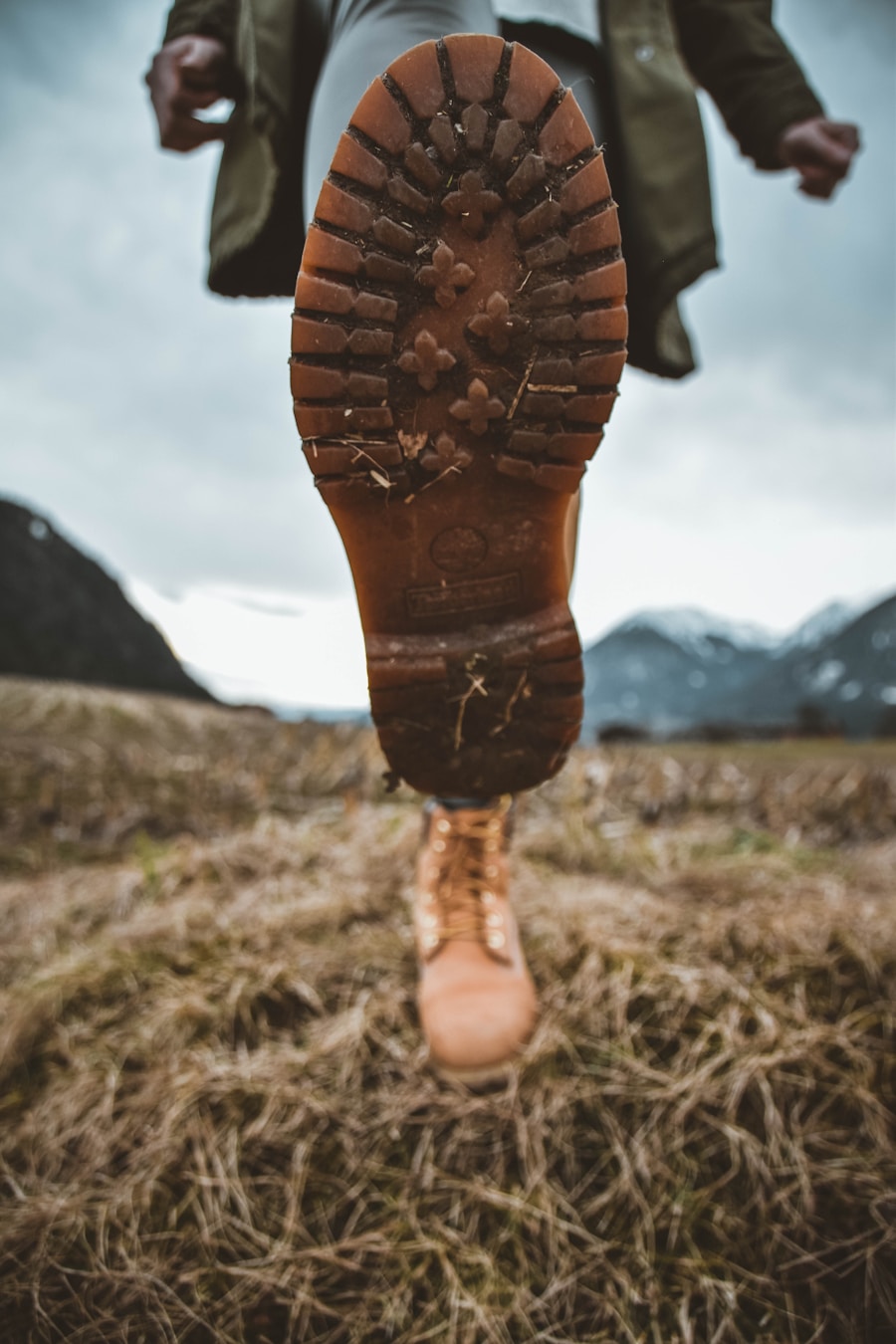Hiking boots are an essential piece of gear for anyone who enjoys exploring the great outdoors. They serve as the foundation for a hiker’s experience, providing the necessary support, protection, and comfort needed to traverse various terrains. Unlike regular footwear, hiking boots are specifically designed to withstand the rigors of outdoor activities, offering features that enhance stability and traction while minimizing the risk of injury.
The right pair of hiking boots can make a significant difference in a hiker’s performance and enjoyment, allowing them to focus on the beauty of nature rather than discomfort or fatigue. The evolution of hiking boots has been influenced by advancements in technology and materials, leading to a diverse range of options available today. From lightweight trail runners to robust mountaineering boots, the market caters to a wide array of hiking styles and preferences.
As outdoor enthusiasts increasingly seek to connect with nature, understanding the importance of selecting the right hiking boots becomes paramount. This article will delve into the various types of hiking boots, factors to consider when making a choice, and recommendations for top brands and models available at REI.
Key Takeaways
- Hiking boots are essential for providing support and protection while hiking on various terrains.
- There are three main types of hiking boots: hiking shoes, day hiking boots, and backpacking boots, each designed for different levels of support and terrain.
- When choosing hiking boots, consider factors such as fit, support, waterproofing, and traction to ensure they meet your specific hiking needs.
- REI offers a wide selection of top hiking boot brands, including Merrell, Salomon, Vasque, and Keen, known for their quality and durability.
- Different terrains require different types of hiking boots, such as lightweight hiking shoes for trails and rugged backpacking boots for off-trail adventures.
Types of Hiking Boots
Hiking boots can be broadly categorized into several types, each tailored to specific activities and terrains. The most common categories include lightweight hiking shoes, day hiking boots, backpacking boots, and mountaineering boots. Lightweight hiking shoes are designed for short hikes on well-maintained trails.
They typically feature a low-cut design that allows for greater freedom of movement and are often made from breathable materials to keep feet cool during warmer weather. These shoes are ideal for those who prioritize speed and agility over heavy-duty support. Day hiking boots, on the other hand, offer more support and protection than lightweight shoes.
They usually come in mid-cut designs that provide additional ankle support, making them suitable for longer hikes or uneven terrain. These boots often feature stiffer soles for better stability and traction on rocky paths. Backpacking boots take this a step further, designed for multi-day treks where hikers carry heavier loads.
They are built with durable materials and provide excellent ankle support, cushioning, and traction to handle challenging conditions. Mountaineering boots represent the pinnacle of hiking footwear, engineered for extreme conditions such as ice and snow. These boots are typically made from rigid materials that offer superior insulation and waterproofing.
They often come with features like crampon compatibility for climbing icy surfaces. Each type of hiking boot serves a unique purpose, and understanding these distinctions is crucial for selecting the right footwear based on individual hiking goals.
Factors to Consider When Choosing Hiking Boots

When selecting hiking boots, several factors should be taken into account to ensure a proper fit and optimal performance. One of the most critical considerations is the fit itself. A well-fitting boot should feel snug but not overly tight, allowing for some wiggle room in the toes while providing adequate support around the heel and arch.
It is advisable to try on boots with the socks you plan to wear during hikes, as this can significantly affect comfort levels. Additionally, trying on boots later in the day when feet are slightly swollen can help achieve a more accurate fit. Another important factor is the terrain you plan to hike on.
Different terrains require different features in a boot. For instance, if you anticipate hiking on rocky or uneven surfaces, look for boots with stiffer soles that provide better stability and shock absorption. Conversely, if your hikes will primarily be on well-maintained trails, lighter options may suffice.
Waterproofing is also a key consideration; if you expect to encounter wet conditions or stream crossings, investing in waterproof boots can keep your feet dry and comfortable. Weight is another aspect that can influence your choice. Heavier boots often provide more support and durability but can lead to fatigue over long distances.
Conversely, lighter boots may sacrifice some support but allow for quicker movement. Ultimately, finding a balance between weight, support, and comfort is essential for an enjoyable hiking experience.
Top Hiking Boot Brands at REI
| Brand | Number of Models | Price Range | Customer Rating |
|---|---|---|---|
| Salomon | 25 | 120 – 250 | 4.7/5 |
| Merrell | 20 | 100 – 200 | 4.5/5 |
| The North Face | 15 | 130 – 300 | 4.6/5 |
| Keen | 18 | 110 – 220 | 4.4/5 |
REI is renowned for its extensive selection of outdoor gear, including a variety of high-quality hiking boot brands that cater to different needs and preferences. Among these brands, Merrell stands out for its commitment to comfort and performance. Known for their innovative designs and use of advanced materials, Merrell boots often feature cushioned insoles and breathable uppers that enhance comfort during long hikes.
Their Moab series is particularly popular among hikers seeking a reliable all-around boot. Salomon is another brand that has gained a loyal following among outdoor enthusiasts. Their hiking boots are known for their lightweight construction and aggressive traction patterns, making them ideal for tackling challenging terrains.
The Salomon X Ultra series combines stability with flexibility, allowing hikers to navigate rocky paths with ease while maintaining comfort throughout their journey. For those seeking rugged durability, Vasque offers a range of boots designed for serious backpacking and mountaineering adventures. Their products often feature robust materials that withstand harsh conditions while providing excellent support.
The Vasque Breeze series is particularly favored by backpackers for its combination of breathability and waterproofing. Other notable brands available at REI include Columbia, Lowa, and Keen, each offering unique features tailored to different hiking styles. Columbia is known for its affordability without compromising quality, while Lowa specializes in handcrafted boots that emphasize fit and performance.
Keen’s distinctive toe protection design appeals to those who prioritize safety on rocky trails.
Best Hiking Boots for Different Types of Terrain
Selecting the best hiking boots often depends on the specific terrain you plan to explore. For rocky trails or mountainous regions, a boot with a stiffer sole and excellent ankle support is essential. The Lowa Renegade GTX Mid is an exemplary choice in this category; it features a Gore-Tex lining for waterproofing while maintaining breathability.
Its Vibram outsole provides superior traction on uneven surfaces, making it ideal for challenging hikes. For those who enjoy hiking in wet conditions or through muddy trails, waterproof options like the Merrell Moab 2 Waterproof Boot are highly recommended. This boot combines a durable leather upper with a waterproof membrane that keeps feet dry without sacrificing breathability.
Its aggressive outsole ensures reliable grip on slippery surfaces. If your adventures take you through desert landscapes or hot climates, lightweight options such as the Salomon X Ultra 3 GTX are perfect for maintaining comfort in high temperatures. This boot features a quick-drying mesh upper that allows for ventilation while providing adequate support and cushioning for long-distance hikes.
For winter hiking or mountaineering expeditions where snow and ice are prevalent, consider investing in specialized mountaineering boots like the Scarpa Phantom 6000. These boots are designed with insulation to keep feet warm in frigid temperatures while offering compatibility with crampons for icy ascents.
How to Properly Fit Hiking Boots

Key Areas to Focus On
When trying on boots, pay attention to several key areas: the toe box should allow your toes to wiggle without feeling cramped; there should be no excessive heel lift when walking; and the arch should feel supported without causing discomfort. A good rule of thumb is to ensure there’s about a thumb’s width of space between your longest toe and the front of the boot when standing upright.
Simulating Hiking Movements
Walking around the store is essential; take your time to simulate various movements you would perform on a hike—climbing stairs or walking downhill can help identify any pressure points or discomfort areas. If possible, try walking on an incline or decline to assess how well the boot holds your foot in place during different movements.
Sizing Recommendations
Finally, remember that different brands may have varying sizing standards; it’s not uncommon to wear different sizes across brands or even models within the same brand. Don’t hesitate to consult with store staff about sizing recommendations based on your foot shape and intended use.
Hiking Boot Care and Maintenance
Proper care and maintenance of hiking boots can significantly extend their lifespan and performance capabilities. After each hike, it’s essential to clean your boots thoroughly to remove dirt, mud, and debris that can cause wear over time. Use a soft brush or cloth along with lukewarm water to gently scrub away any buildup without damaging the material.
For leather boots, applying a specialized leather conditioner after cleaning can help maintain suppleness and prevent cracking. It’s also advisable to treat leather with waterproofing agents periodically to enhance water resistance—this is especially important if you frequently hike in wet conditions. Synthetic materials require different care; many modern synthetic boots come with built-in waterproof membranes that need special attention as well.
Avoid using harsh detergents or submerging synthetic boots in water; instead, wipe them down with a damp cloth after each use. Storage is another critical aspect of maintenance; always store your hiking boots in a cool, dry place away from direct sunlight when not in use. This helps prevent degradation of materials caused by heat exposure or moisture buildup.
Regularly inspecting your boots for signs of wear—such as frayed laces or worn-out soles—can help catch potential issues before they become significant problems. Replacing laces or resoling worn-out soles can often extend the life of your favorite pair of hiking boots.
Finding Your Perfect Pair of Hiking Boots at REI
Finding the perfect pair of hiking boots at REI involves understanding your specific needs based on terrain type, fit preferences, and intended use.
With an extensive selection of reputable brands and knowledgeable staff ready to assist you in making an informed decision, REI stands out as an excellent destination for outdoor enthusiasts seeking quality footwear. By considering factors such as fit, terrain requirements, and maintenance practices outlined in this article, you can confidently navigate through the myriad options available at REI.Whether you’re embarking on a leisurely day hike or preparing for an ambitious backpacking trip through rugged landscapes, investing time in selecting the right pair of hiking boots will undoubtedly enhance your outdoor experience—allowing you to fully immerse yourself in nature’s beauty without distraction or discomfort.
If you’re planning a backpacking trip and need to find the best gear, including hiking boots, you may also want to check out this article on the best ultralight tent for backpacking. Having a reliable tent is crucial for a successful outdoor adventure, just like having the right pair of hiking boots. Make sure to do your research and invest in quality gear to make the most of your next getaway.
Love travel? Join Our Facebook Community
FAQs
What are hiking boots?
Hiking boots are specialized footwear designed for outdoor activities such as hiking, trekking, and mountaineering. They are designed to provide support, stability, and protection for the feet and ankles in rugged and uneven terrain.
What should I look for in a good pair of hiking boots?
When looking for hiking boots, it’s important to consider factors such as fit, support, traction, waterproofing, and durability. The boots should provide a comfortable fit, good ankle support, a sturdy sole with good traction, and be made of high-quality, waterproof materials.
Where can I buy hiking boots?
Hiking boots can be purchased at outdoor retailers, specialty hiking and camping stores, sporting goods stores, and online retailers. It’s important to try on hiking boots in person to ensure a proper fit before making a purchase.
What are the best brands for hiking boots?
Some popular and reputable brands for hiking boots include Merrell, Salomon, Keen, Vasque, The North Face, Columbia, and Lowa. These brands offer a range of hiking boots designed for different types of terrain and activities.
How do I know if hiking boots fit properly?
Properly fitting hiking boots should feel snug but not too tight, with enough room to wiggle your toes. Your heel should not lift up when walking, and there should be no pressure points or areas of discomfort. It’s important to try on hiking boots with the socks you intend to wear while hiking.
What is the average cost of hiking boots?
The cost of hiking boots can vary depending on the brand, materials, and features. On average, a good pair of hiking boots can range from $100 to $250. Higher-end models with advanced features may cost more.
